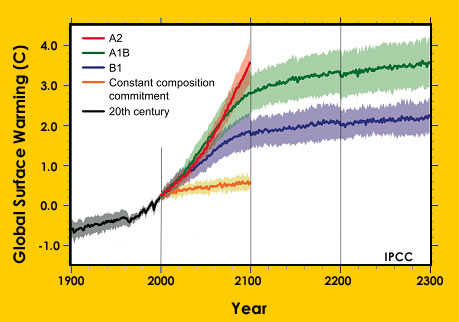Click on image for full size
Courtesy of UCAR Digital Image Library
Accuracy and Uncertainty in Climate Models
Global climate models are used to predict what will happen to Earth’s climate in the future. Groups like the Intergovernmental Panel on Climate Change (the IPCC) compare the results from several different climate models as they figure out what is most likely to happen. But how do scientists know whether a model’s predictions are correct? How do they figure out whether the model is doing a good job at predicting the future of climate change?
To figure out whether a climate model is doing a good job, scientists give it a test. The model is run through a time period for which we have actual measurements of Earth’s climate, the past 100 years for example. The results from the model are compared with the actual measurements of real climate. If the model and the actual measurements are similar, then the math equations in the model that are used to describe how Earth works are probably quite accurate. If the model results are very different from our records of what actually happened, then the model needs some work.
Some uncertainty about our future climate is because there are processes and feedbacks between different parts of the Earth that are not fully understood. These are difficult to include in the models until we understand them better. Today, scientists are conducting research to learn more about how some of the less well-known processes and feedbacks work. For example, the effects of clouds on climate is known to be a large, however it is not fully understood and so scientists are researching clouds to ensure that climate models are as accurate as possible. Scientists work to ensure that natural processes are represented in climate models as accurately as possible, so that models can be used to make predictions of future climate that are as accurate as possible.
Most of the uncertainty in these predictions of future climate is not related to natural processes. Instead, it is uncertain how much pollution humans will be adding to the atmosphere in the future. Innovations that stop or limit the amount of greenhouses gases that are produced, laws and rules that change the amount of pollutants that are released, and how the growing human population lives in the future are all somewhat unknown. To deal with this, climate models are often run several times, each time with different amounts of pollution and development by humans.
According to the IPCC, most climate scientists agree that while climate models are not perfect, they are currently pretty good and better models would not change the conclusion that Earth’s average temperature is warming.
.













